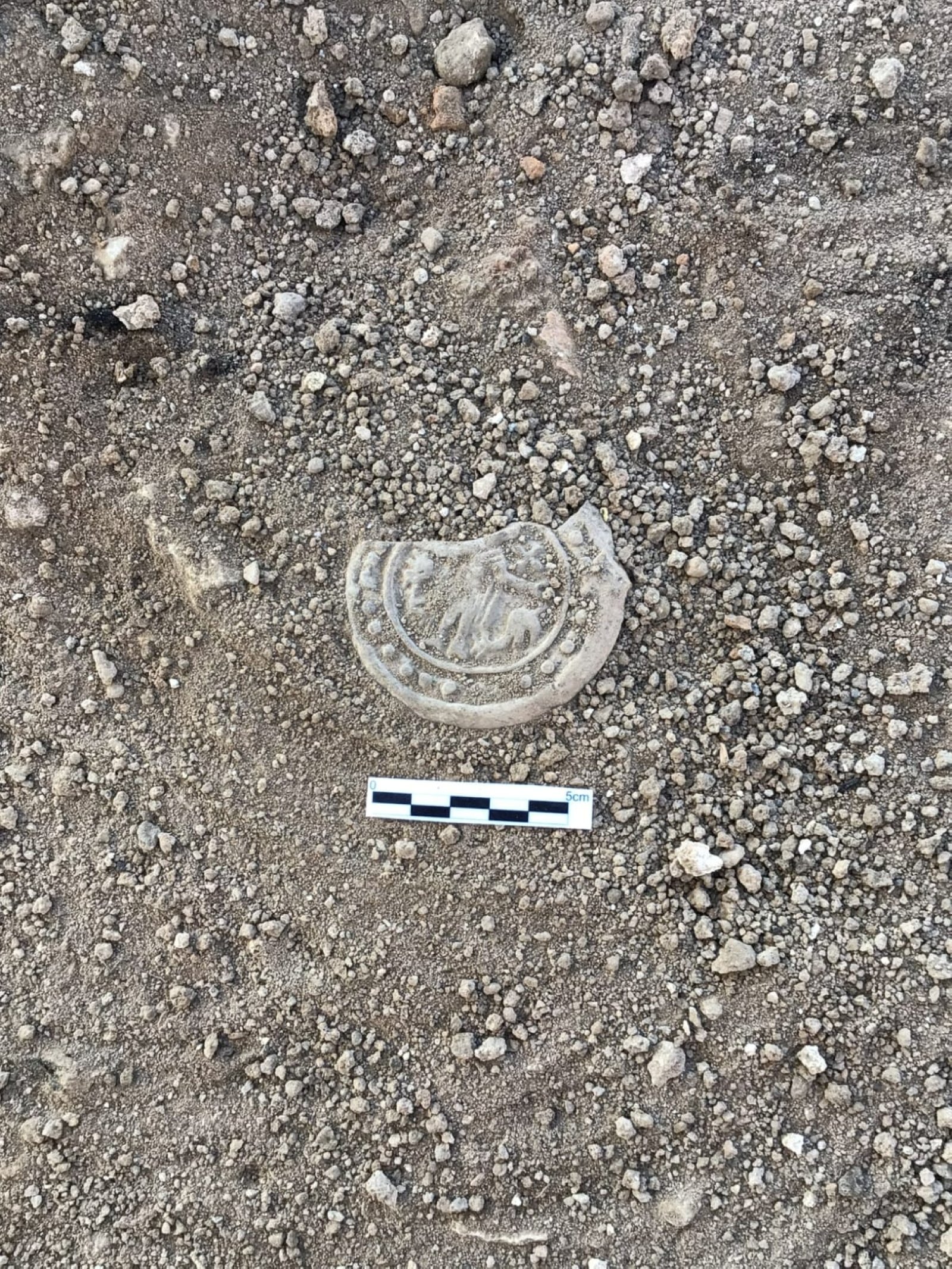© Turkuvaz Haberleşme ve Yayıncılık 2026
An ampulla, a small round vessel with two handles used for sacred purposes, has been unearthed during the ongoing excavations in the ancient city of Dara, located in southeastern Mardin province. The artifact, which was determined to be 1,400-year-old, features a depiction of Menas of Egypt, a well-known Coptic saint to whom many miracles were attributed.
Excavations and research have been ongoing for more than 30 years in Dara, which lies in the Oğuz neighborhood of Mardin province, some 30 kilometers (19 miles) away from the provincial center. The ruins of the ancient city have been compared to the famed city of Ephesus in Turkiye's Aegean region, earning it the nicknames "the Ephesus of Mesopotamia" and "the breadbasket of the ancient Near East."
The discovery of the ampulla is of great importance as it provides valuable information about the history of the ancient city. Commenting on the significance of the latest finding, Hüseyin Metin, the head of the excavation team, explained that ampullas were used by pilgrims to carry cosmetic products like sacred water and oil in the past. According to the excavator, this finding proves that a holy pilgrimage was made from Dara to Egypt.

The 1,400-year-old ampulla features Menas of Egypt and a camel on the sides of the bowl, and pilgrimage motifs on the top. Menas of Egypt, a martyr and wonder-worker, was born in Egypt some 1,400 years ago and killed due to his Christian faith during the Roman era.
The material used in the ampulla found in Dara is very important, Metin explained, since it was produced in Abu Mena, some 31 kilometers from Alexandria, Egypt.
Apullas can come in varying forms, particularly in western Anatolia, he said, adding that the ones produced in Egypt's Abu Mena region have a very standard shape, with not many examples in Anatolia.
So, the ampulla shows that Dara was part of an international commercial and religious network in the sixth century, he said.
The ancient city of Dara, founded by the Eastern Roman Empire to protect their border against the Sasanian or Neo-Persian Empire, is a favorite spot for tourists to take photos, with many newlyweds using the historical site as a backdrop.
The archeological excavations began in the ancient city in 1986, but only some 10% of the area of an ancient village has been unearthed so far.
Over a period of 25 years, archeological digs slowly revealed a monumental mass graveyard or necropolis.
A cistern located some 25 meters (82 feet) under a village house in Dara, which villagers call the "dungeon" and has drawn comparisons to Istanbul's famed Yerebatan Cistern, was painstakingly unearthed over 15 years.
